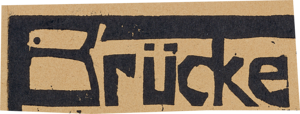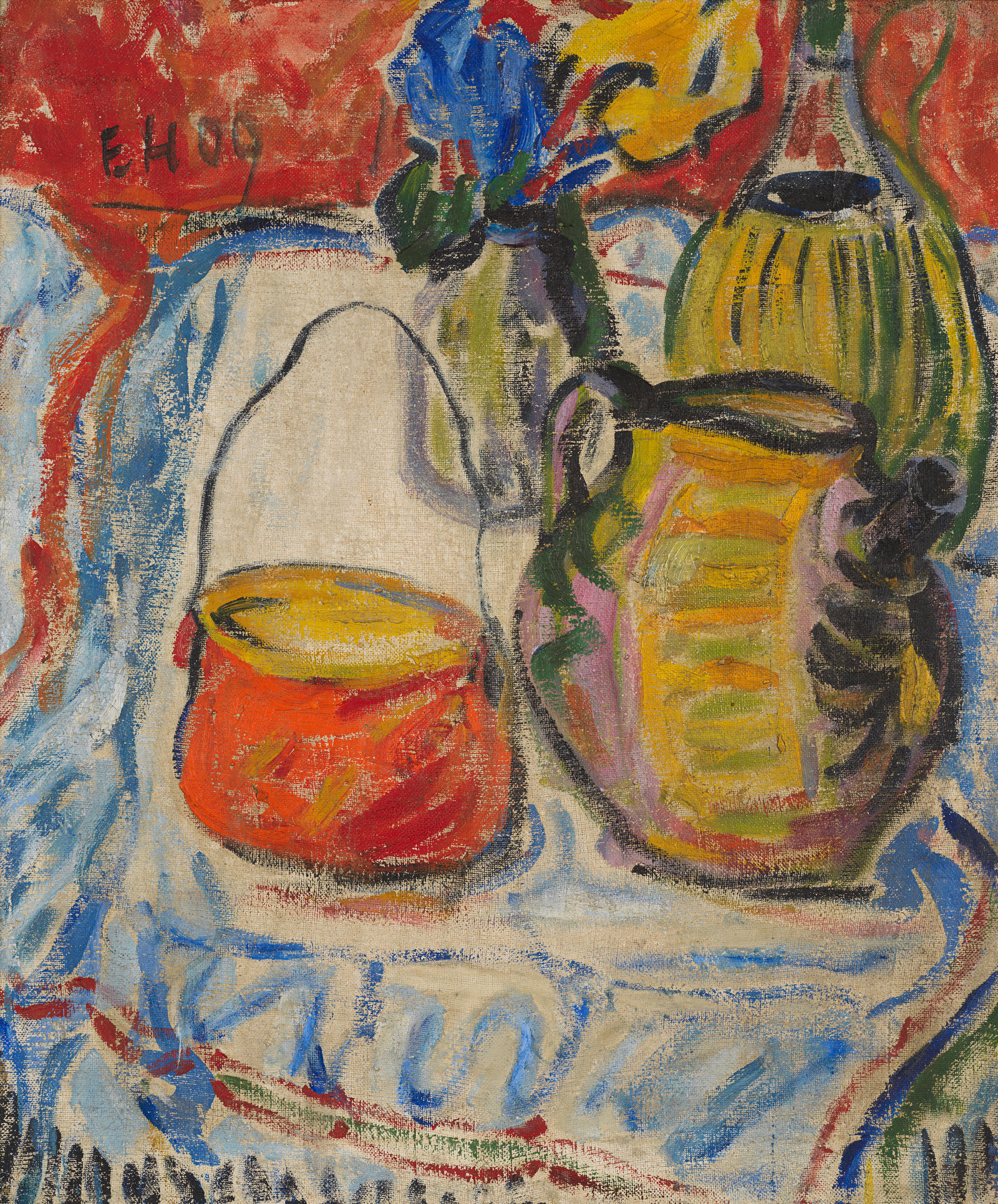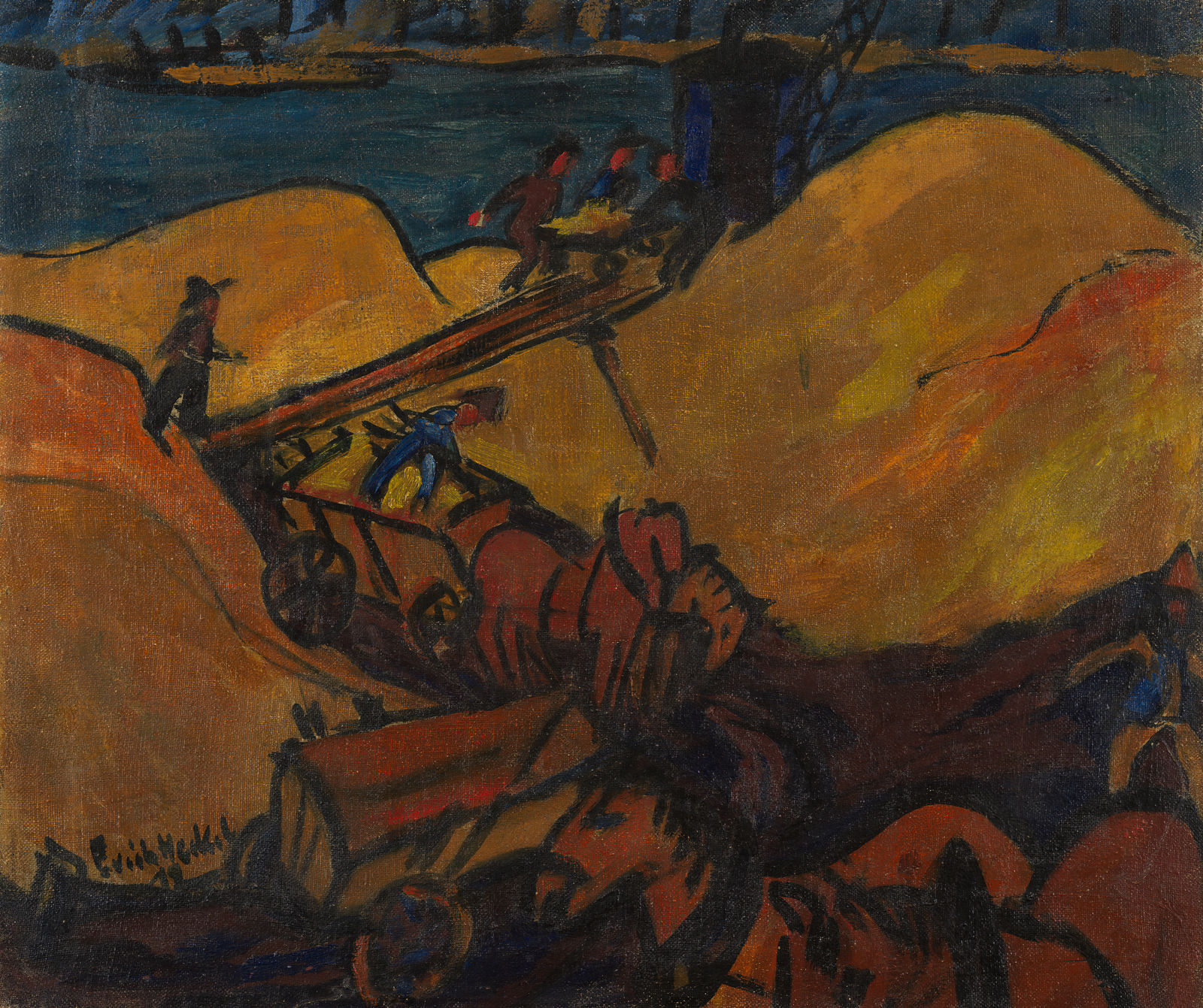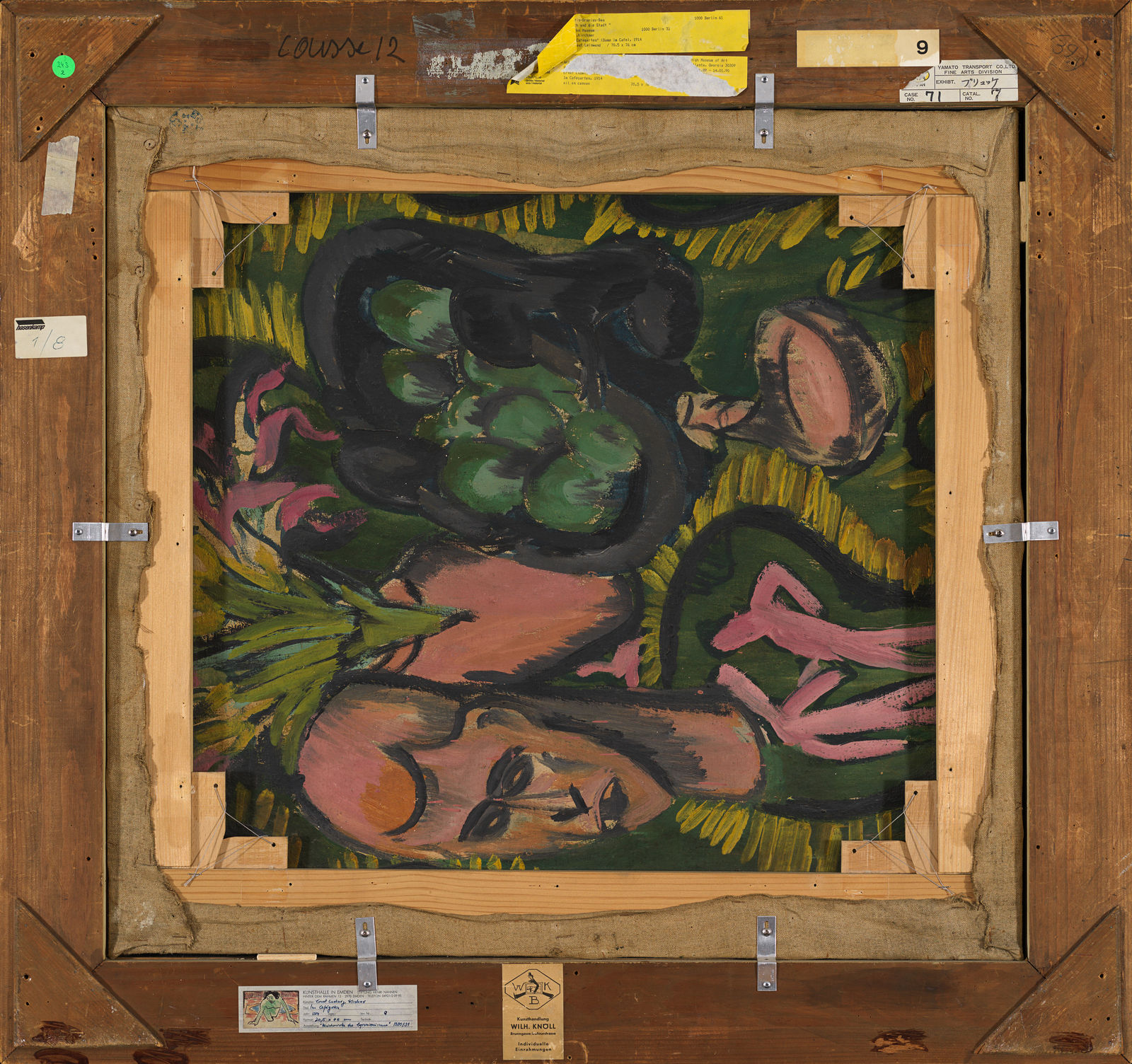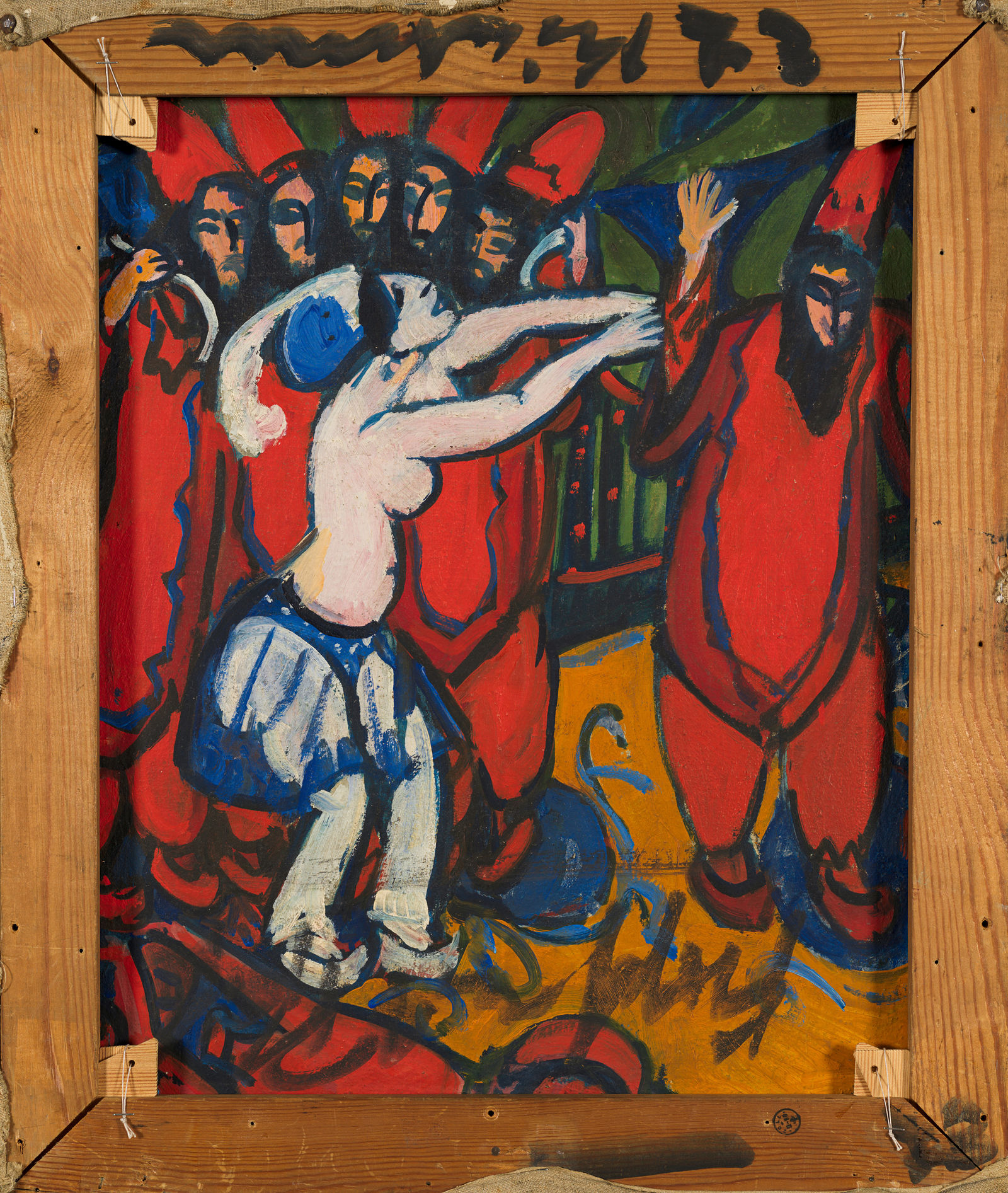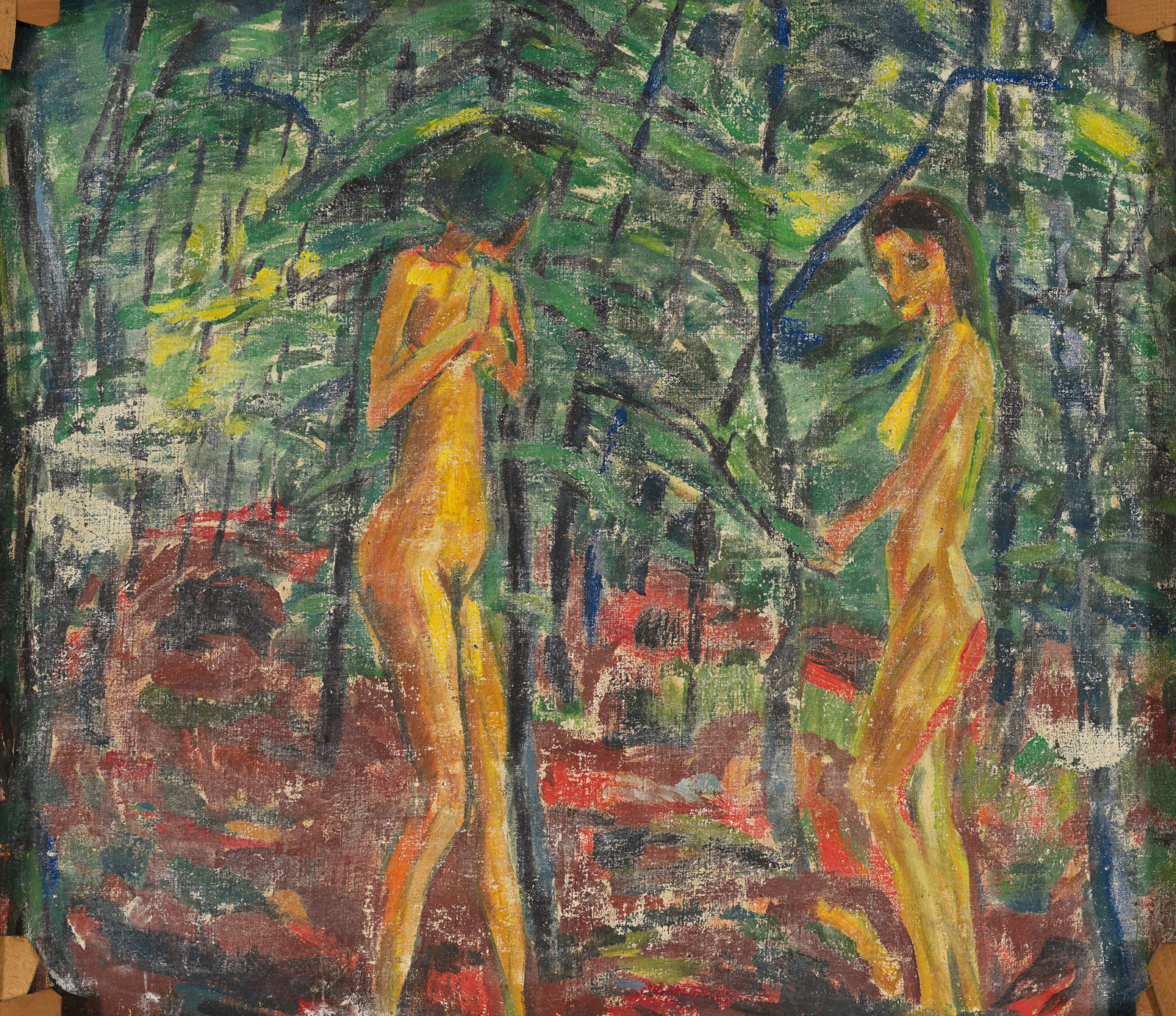Verso
by Nadine Bauer
11 images
Usually in exhibitions, only one side of a painting’s canvas is visible. In Brücke-Museum, ten paintings by Erich Heckel, Max Pechstein and Ernst Ludwig Kirchner show a full painting on both sides of the canvas. In general, the more recent image is now considered the front side, but there are exceptions, as in the case of Erich Heckel’s Young Man and Young Girl (1909) and River Landscape near Würzburg (1921).
It wasn’t always the artists who made the decision as to which side should be exhibited. Heckel, for example, whitewashed over his depiction of Roman Still Life dating from 1909. Before the image found its way into Brücke-Museum, only the depiction on the back of Sand Dredging (1912) was the image offered by art dealers. In the early 1970s, the hidden still life was discovered, and the painting was then successfully sold. The revelation was hence also linked to an interest in “new” paintings by the Brücke artists in the art market at that time. This example highlights how the choice of which side should be displayed can always have something to do with the prevailing tastes of the day.
The discovery of the reverse sides of artworks is relevant to provenance research too. It’s worth taking a look, for example, at the frames – such as that of Kirchner’s Nude Woman Combing her Hair / Violet Trees – since here, alongside the themes depicted on the canvases, we can also find clues to the pieces’ provenance.
